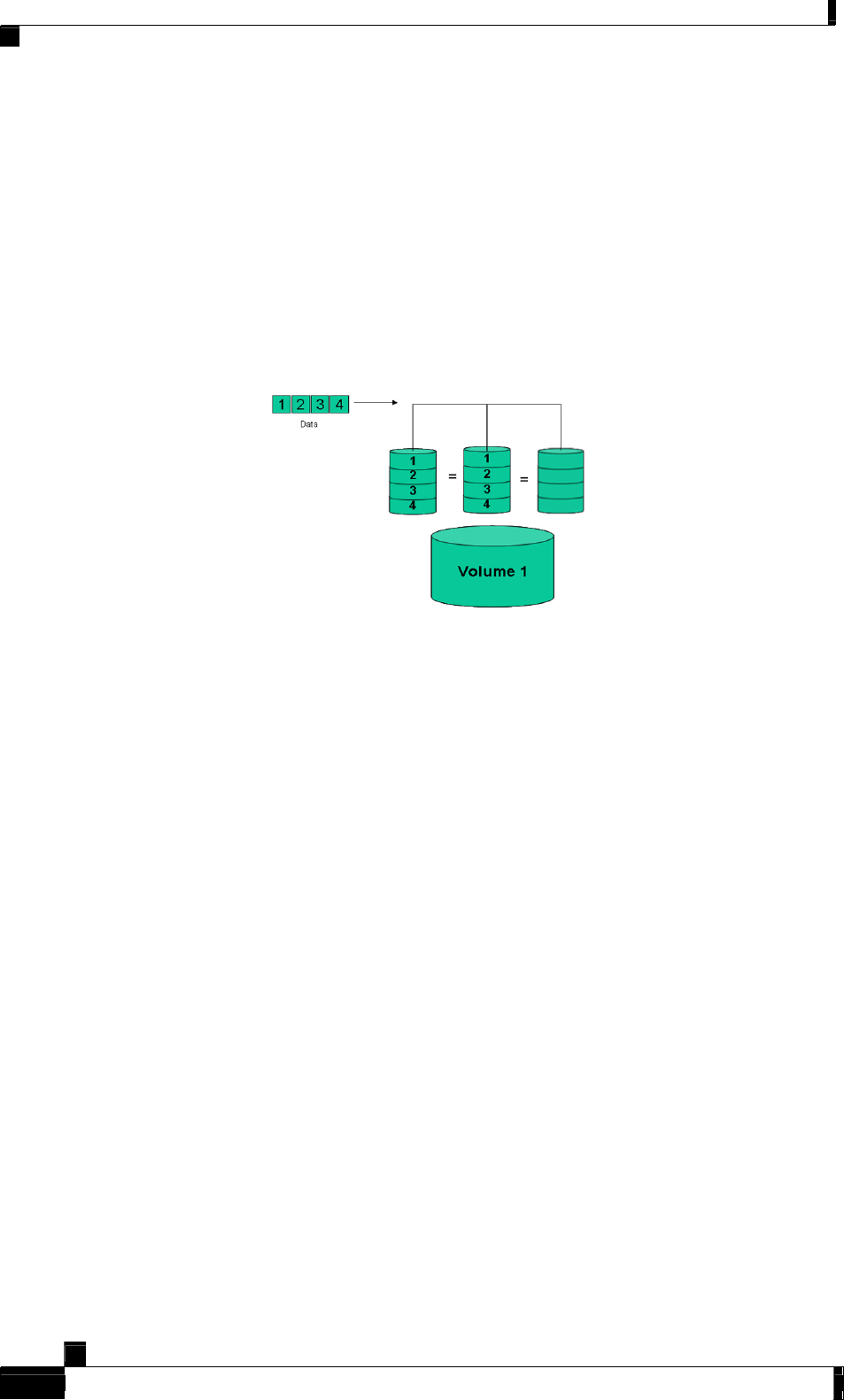Product data
Table Of Contents
- Contents
- Introduction
- Networked Storage Overview
- Storage Concepts and Technologies
- Conclusion
- Obtaining Technical Assistance
- Appendix A

Storage Concepts and Technologies
RAID 1+Spare (Mirror + Spare)
Select RAID1 + Spare to dedicate another disk as the automatic backup when one member of
the mirrored configuration fails. This ensures that if a disk fails a spare disk is available to
automatically replace the failed disk (Figure 10). The following design considerations apply:
• Minimum Number of Disks: 3
• Advantages: Excellent redundancy. Good performance.
• Disadvantages: Costly.
The spare disk is not used until a working disk fails. For example, in a two-disk mirror
where each disk is 80 GB, the total raw space is 160 GB, of which 80 GB is protected and 80
GB is available for use. There is also 80 GB of space available. This means that of the 240 GB
of total space, only 80 GB is actually usable at any given time.
Figure 10: RAID 1+Spare
RAID 5 (Striped + Parity)
RAID 5 is one of the more popular and versatile levels implemented due to its excellent
performance (that is, high Read transaction rate, medium Write transaction rate, and low
ratio of parity disks to data disks) and good fault tolerance. It uses block-level striping with
parity data distributed across the disks in the array. This means that every time a block is
written to a disk in the array, a parity block is generated within the same stripe.
RAID 5 stores parity data which can be used to rebuild data should data become lost or
corrupted, but not full redundant data. The calculated value is stored on each disk on blocks
allocated to parity. This means that the amount of usable space for the protected disk is
decreased due to the parity space requirements. The amount of available protected space is
decreased by the size of the single disk. For example, if there are three 80 GB disks in the
array with a total of 240 GB of space configured as RAID 5, the usable space equals 240
minus 80 which equals 160 GB of protected usable space. If one of the drives fails, the
missing information can be recreated using parity bits stored on the remaining members. Use
this RAID level for applications such as Intranet servers; database servers; Web, e-mail, and
News servers; and File and Application servers (Figure 11).
The following design considerations apply:
• Minimum Number of Disks: 3
• Advantages: Good balance between space usage and disk protection. Higher read
performance than RAID1; similar to RAID 0.
• Disadvantages: Because of the parity that must be calculated, write transactions are
somewhat slower than read transactions. It is resource-intensive to rebuild in the event
of a disk failure (as compared with RAID 1).
White Paper: Network Storage LINKSYS © 2007
12 EDCS-593805 v1.0
A printed copy of this document is considered uncontrolled










